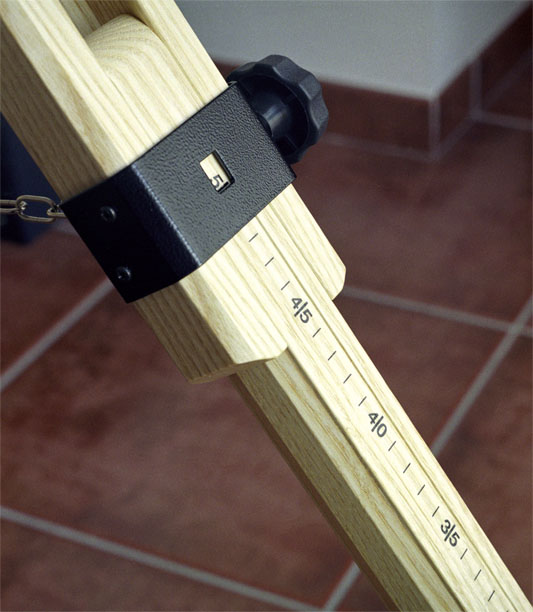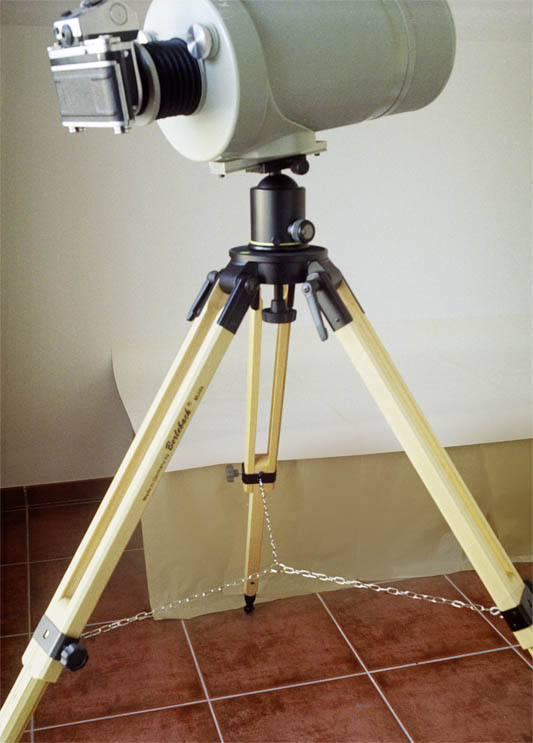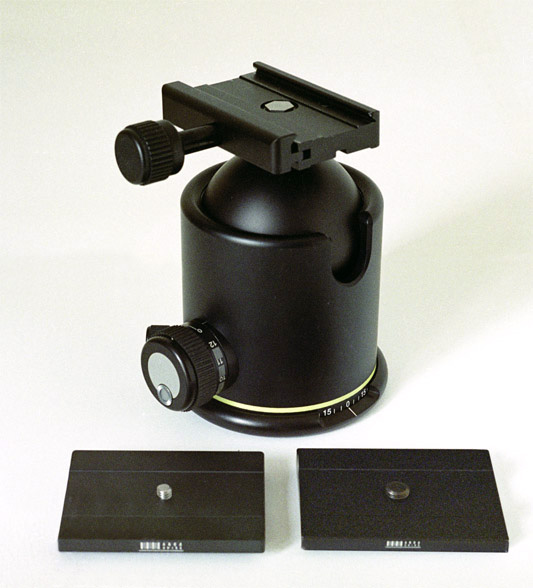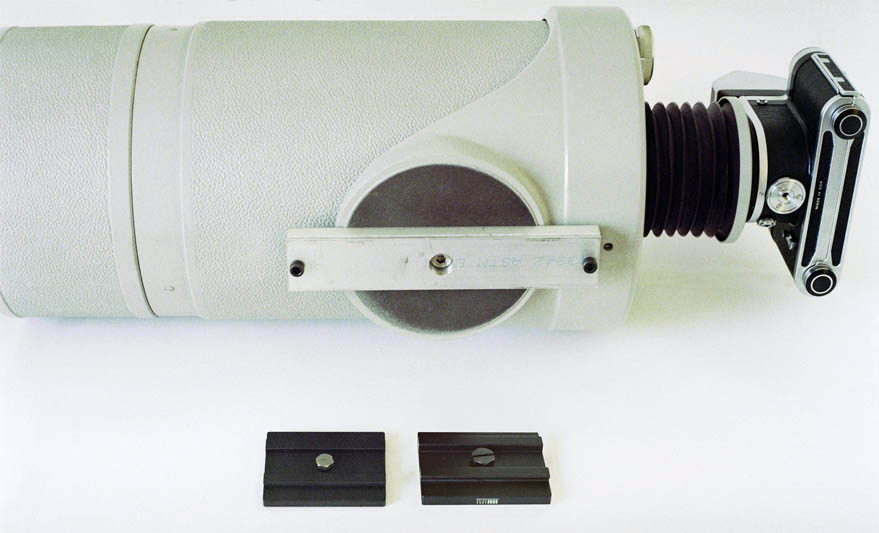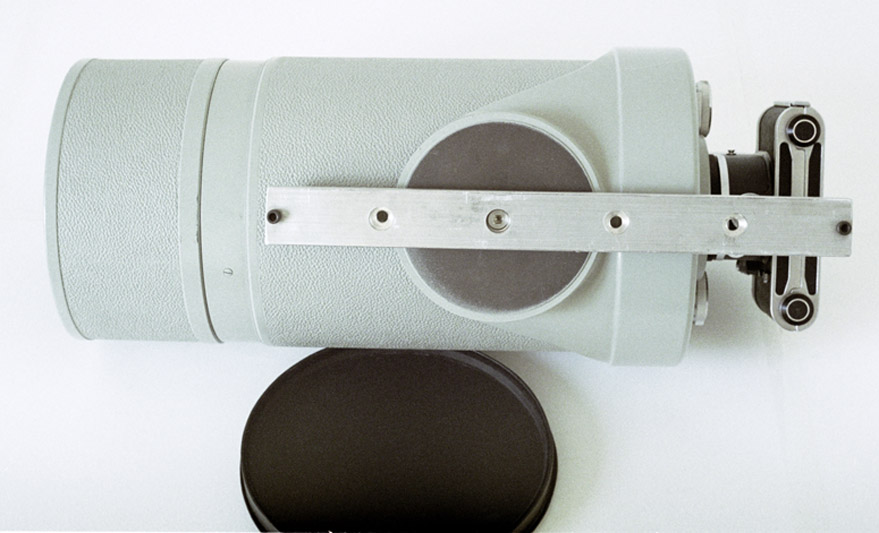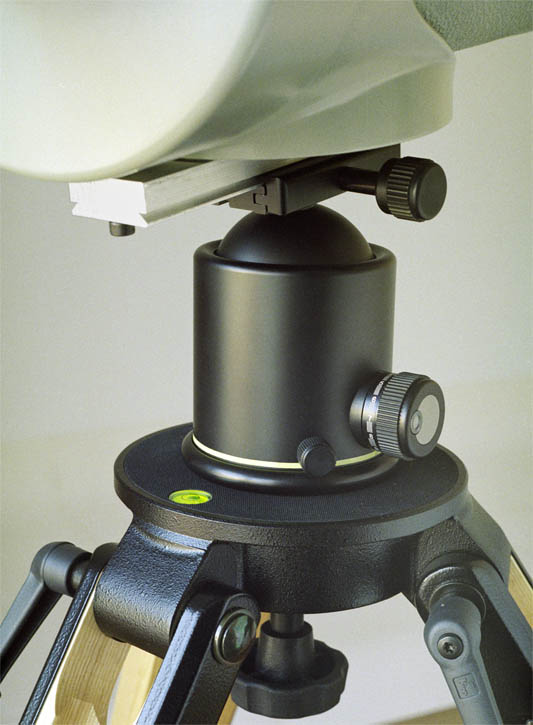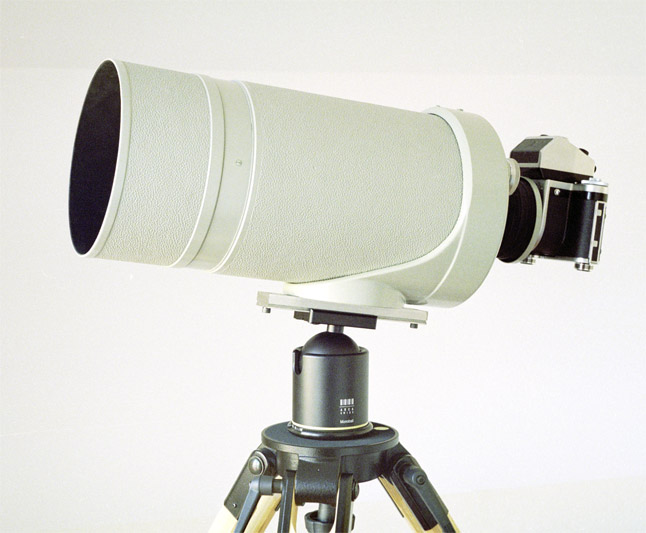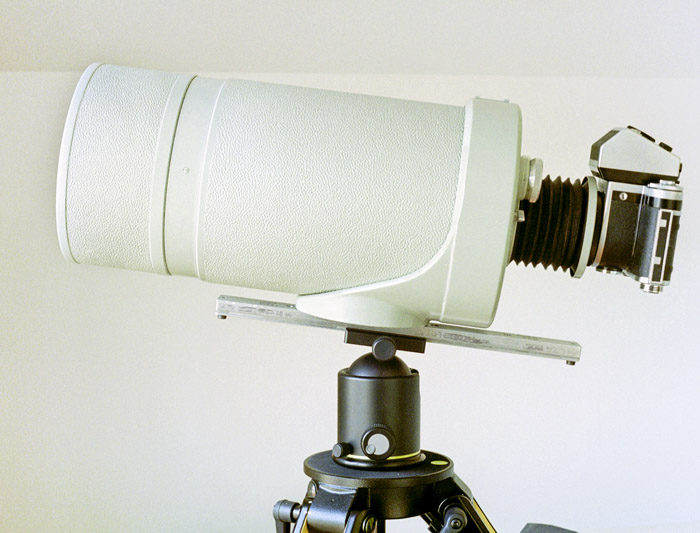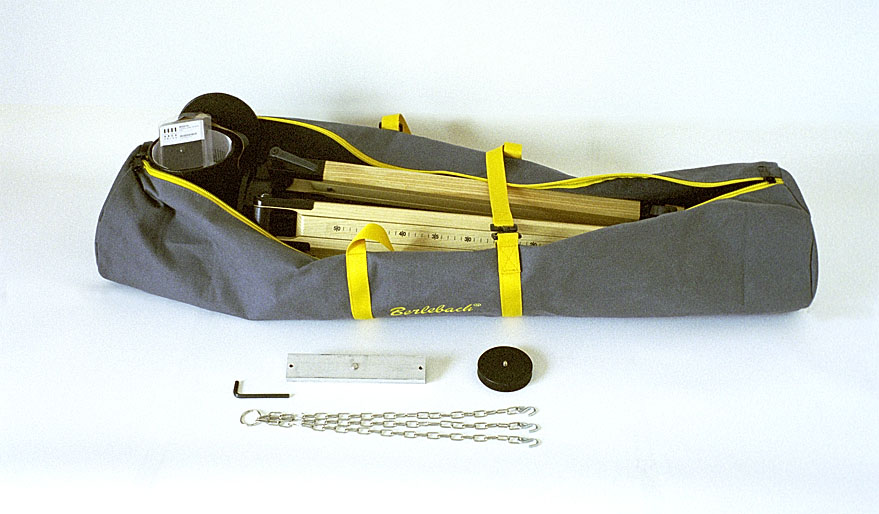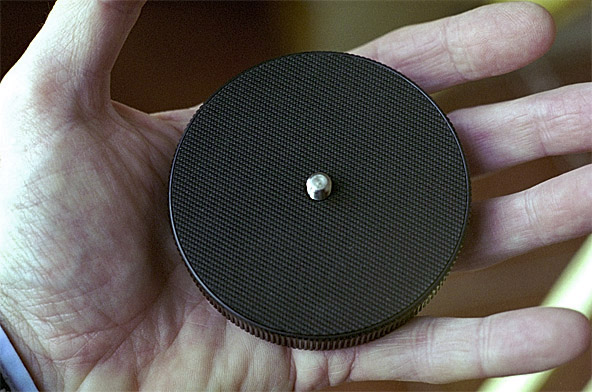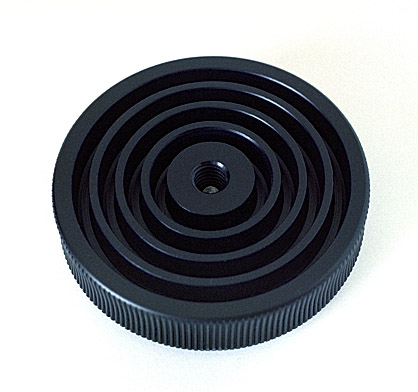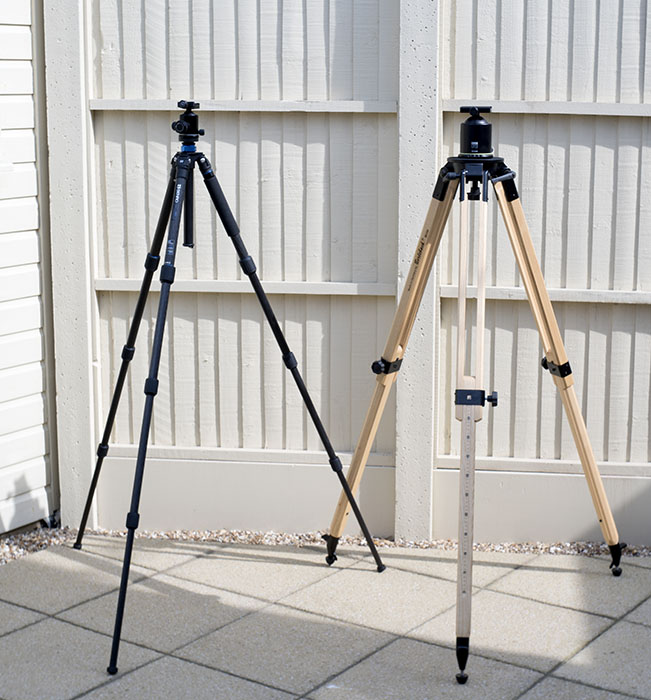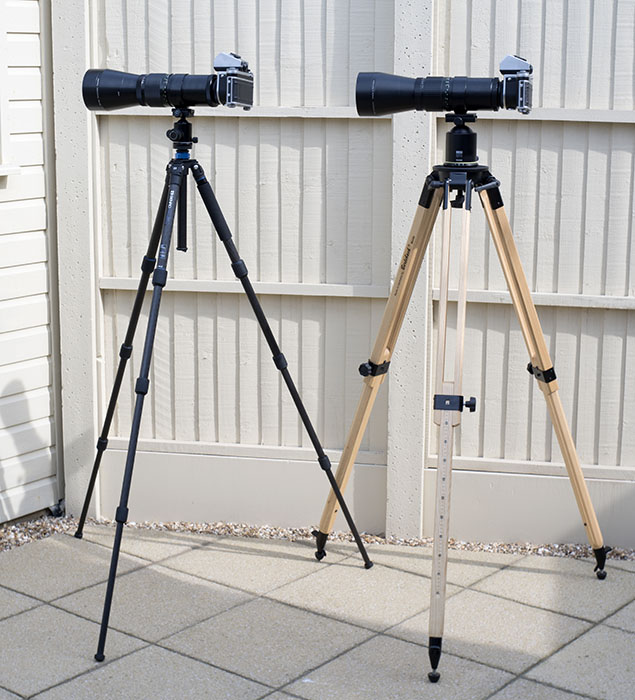by TRA
A tripod for long lenses
With my tests of 500mm lenses with a 2× converter in 2002, I discovered that my tripod, which I had thought was good, was not steady enough to keep the camera and lens absolutely still. The problem is that the more powerful the lens, the more it magnifies the subject, and with it any movement. For 1000mm lenses, a shutter speed of 1/1000 sec is recommended, and the Pentacon Six can provide this (without the infamous banding experienced by users of the Kiev 88!). However, there is often not enough light to allow the use of such a high speed.
Also, my tripod was just not strong enough to provide reliable support for the 14 kilogram 1000mm Carl Zeiss Jena mirror lens.
So the task was to find a tripod for this lens. It would then cope with any other combination that I might wish to use.
The tripod
Discussion on “The Kiev Report” forum led me to Berlebach wooden tripods. These have been made in Germany for over 100 years, and are much loved by astronomers, land surveyors and photographers. Tests have shown that Berlebach wooden tripods dampen vibrations (for instance, caused by the SLR mirror at the end of its travel) far better than aluminium and carbon fibre tripods.
The tripod head
With high-end tripods like the Berlebach, the tripod head is a separate item that goes between the tripod and the camera. The choice here is mostly between a 3-way pan-&-tilt head and a ball head. Having had an extremely bad ball head many years ago, I have always preferred a 3-way pan-& tilt head, with three separate locks for:
- panning (swinging from left to right)
- tilting (swinging up and down)
- pitch & roll (rotating the camera, for instance, to change from “landscape” to “portrait” format)
Berlebach’s catalogue includes a range of tripod heads.
However, a user of the Carl Zeiss Jena 1000mm lens recommended a very special ball head: The Arca-Swiss B1-G monoball. This ingeniously-engineered item has an aspherical (non-round) head that increases the grip automatically as one tilts further away from the horizontal. This is designed to maintain control and prevent heavy lenses or cameras flopping over unpredictably when tilted too far.
Total height
In choosing a tripod of suitable height, I calculated:
- the height of the tripod with legs fully extended and spread a safe distance apart
- the height of the ball head
- the height from the base of the Pentacon Six to the viewfinder when working with a (metering) prism.
- Berlebach UNI 14 tripod: 1 metre 36 cm high (that’s about 4 ft 5 in)
- the B1-G with standard mounting plate 14.6 cm (5¾ in)
- from the base of the Pentacon Six to the centre of the viewfinder on the metering prism is approximately 11 cm (about 4¼ in).
I am taller than that, but my eyes are not on the top of my head :), so that does result in a height that is about right for my eye-level, with only a small amount of hunching forward.
(The Berlebach website says that the maximum height of this tripod is 1 m 29 cm, so they must be calculating this with the legs slightly wider. Their catalogue states that heights are based on an approx 20° leg spread.)
The Berlebach UNI 24 is quoted as having a maximum height of 1m 60 cm, but it also has a larger transportation length (103 cm), weighs more (7.3 kg instead of the 6.2 kg of the UNI 14), and costs a little more. I decided that the UNI 14 had the right combination of factors for me.
Dolly
You might consider adding a “dolly” to the set-up. This is a Y-shaped base made out of wood or metal, with lockable wheels and a locating slot for each leg. This will also naturally add to the overall height. Berlebach and other suppliers offer tripod dollies.
Delivery times
Having visited the Berlebach website (http://www.berlebach.de/),
I
decided to phone them, and placed an order for a UNI 14
one Friday afternoon. (I could have ordered via
the internet.) They told me that it would go out
the following Monday. Four days later (on the
Thursday), the tripod was delivered – not bad for an
international order from Germany to another European
country.
| The Berlebach UNI 14 tripod | |||||||||
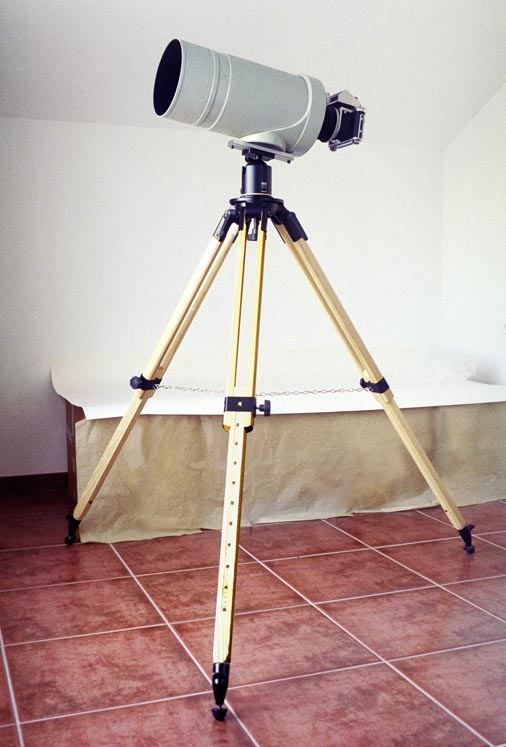 1000mm Mirror
lens, Pentacon Six, lens plate, B1-G ball head,
Berlebach tripod
[C440_25]
|
The UNI
14 is a big, solid tripod. Minimum height is
13 cm, but to achieve this, the legs need to be
fully spread out, virtually horizontal.
Maximum height (as indicated above) is
approximately 1 metre 36 cm. This tripod
does not have a centre column, but centre columns
generally undermine the stability of the tripods
on which they are mounted. (If you must have
a centre column, Berlebach have other models with
them.) The UNI 14 has a load capacity of 55
kilos – not only much more than the weight
of my largest lens (14 kg), but also more than the
weight of some of my friends! So anxiety
about the trustworthiness of the tripod will be a
thing of the past!
|
||||||||
| At the top of each
leg I have made an index mark in white that I can
align with a similar mark that I have made on the
metal that holds the leg, to speed up the process
of getting each of the legs at the same angle. I have subsequently added a second mark on each leg, to show the best position when closed and thus speed up the process when storing the tripod. I would recommend that Berlebach consider adding such marks. |
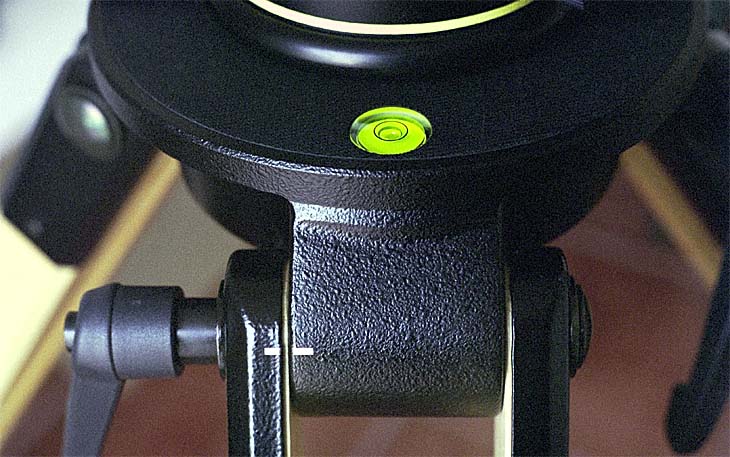 [C444_1.jpg]
|
After initial set-up
of the tripod, it is important to get the top
plate as horizontal as possible. To achieve
this, it is necessary to slacken off the locking
lever of one or more legs in order to adjust the
leg angle, or if the floor or ground is
exceptionally uneven, to adjust the length of one
or two of the legs. |
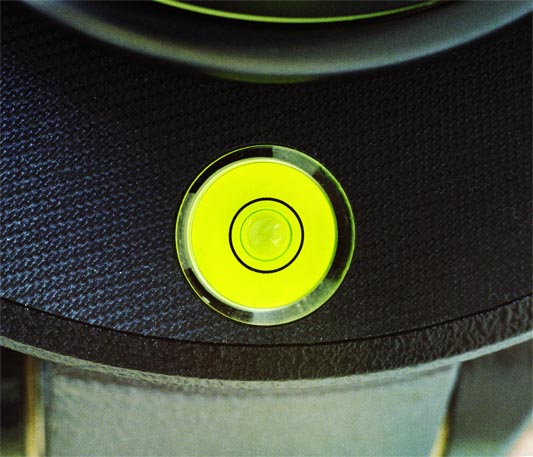 The large bubble
level on the top plate of the tripod enables one
to ensure that it is as level as possible.
[C440_32.jpg] |
Chain
|
The floor of my studio has shiny
tiles, and I was worried that the tripod legs
might splay out under the weight of the mirror
lens, since the UNI 14 does not have leg spread
stops. Then I noticed that the metal
bracket that holds the height-adjustment knobs
on each leg of the tripod has on its inner
surface something that could receive a hook, so
I bought a keyring and a fairly lightweight but
strong chain that I cut into three equal
lengths, feeding the link at one end of each of
the three lengths of chain onto the
keyring. Onto the last link at the other
end of each chain I added an S-shaped
hook. This slots into the metal bracket on
each leg, providing a Y-shaped configuration of
the chains that further steadies the legs.
I don’t know if it’s really necessary, but with
this really heavy lens I prefer a
belt-&-braces approach. On a subsequent visit to the
Berlebach website, I discovered that they do in
fact offer just such a chain, in a brass colour
that is a better match to the colour that I
chose for my tripod (natural wood – Berlebach’s
tripods are also available in other colours).
|
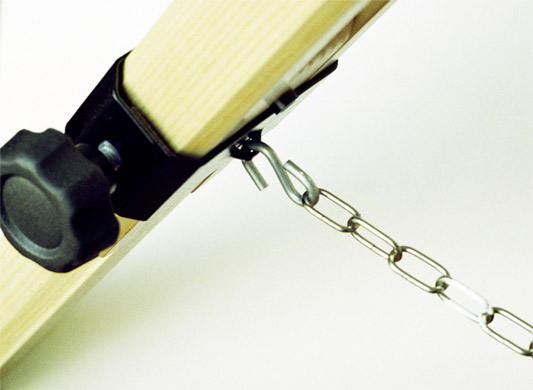 Detail of chain
attachment point
[C440_35.jpg] |

